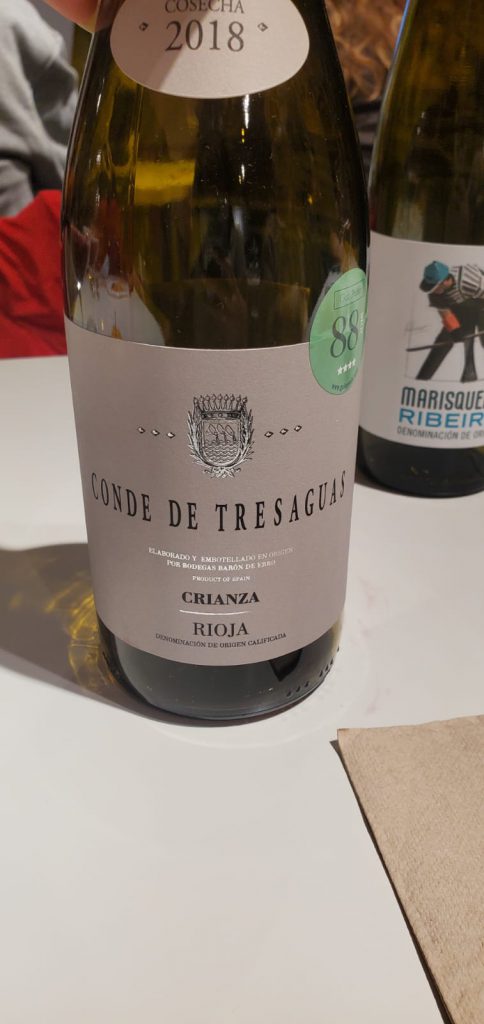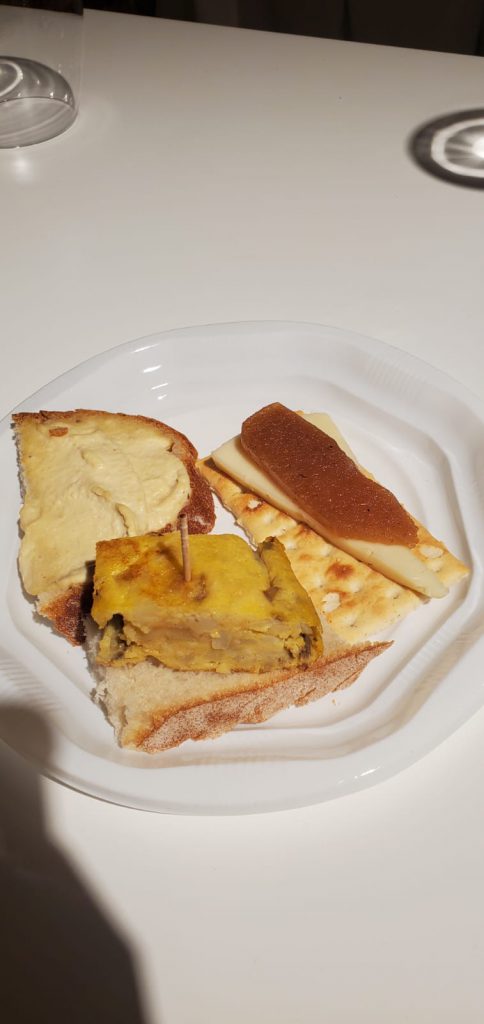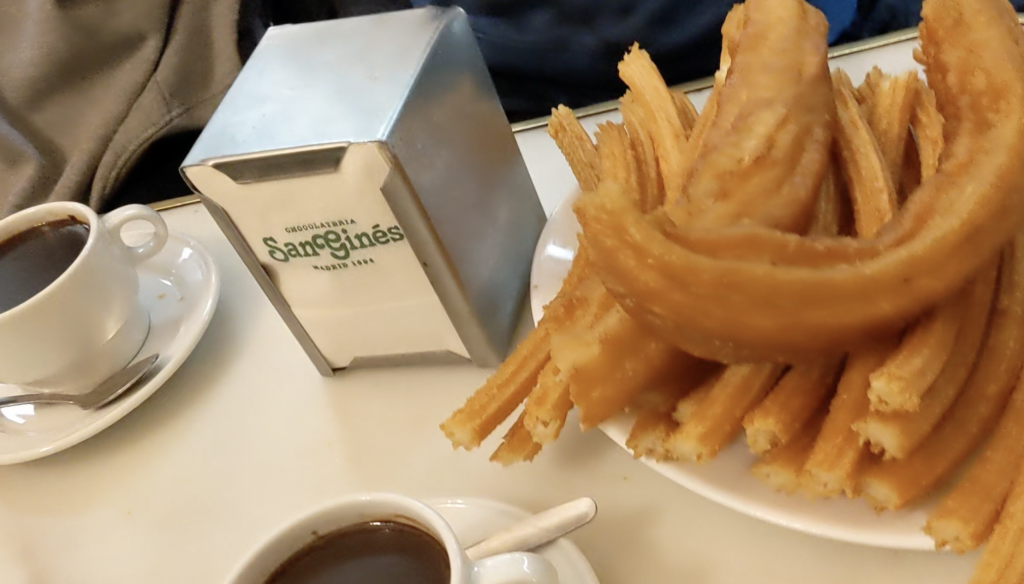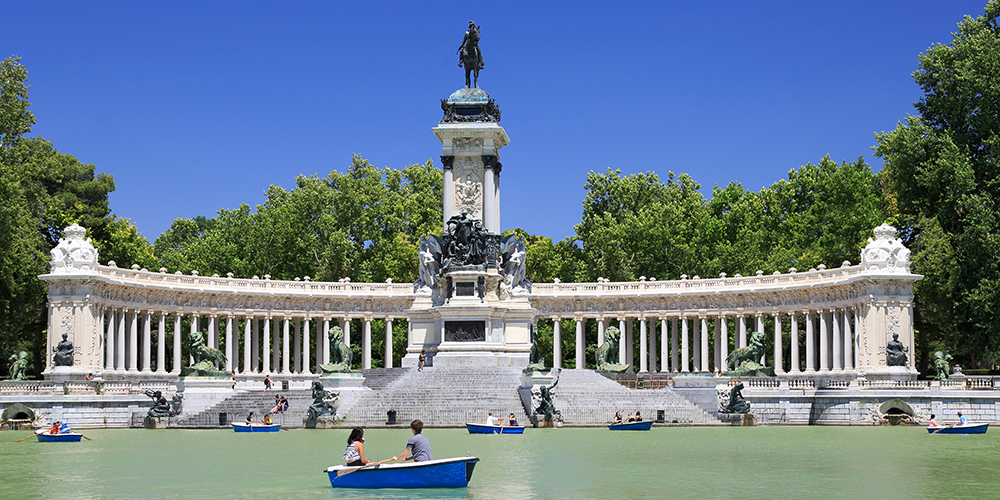Even before I touched down in Madrid, I had the goal to wine and dine like the locals. My grandmother had visited Southern Spain before and told me of the quality and freshness of the food here. The cuisine of Spain derives from both geographical features, being located on the Mediterranean, as well as historical ones. Knowing a little about the history of Spain being a place with all 3 of the major religions: Christianity, Islam, and Judaism in one region at a certain point of time, I was excited to experience a culture inspired by many different walks of life. The Spanish are so serious about preserving the integrity of their food, there is also a concept called denomination that assigns traditional dishes and wines to certain regions to protect their cultural and creative property.


At the wine-tasting event, we learned about the proper steps to make drinking wine a holistic experience of almost all the senses because, as the lecturer had emphasized, wine is alive. First, you observe the wine. Is it glistening and clear? If it’s not, the wine is dead and maybe you should ask for a different bottle. Then, you pick up the glass from the stem to not alter the taste and quality of the wine with your body temperature. You then tilt the glass enough to see all the wine, so it is divided into 2 sections: the part of the drink near the rim and the rest of the body. These may be distinguishable by their different colors, especially in red wines. Next, it is time to smell the wine. This is done up to three times because wine simply sitting in the glass smells different than wine that has been freshly sloshed in either a clockwise or counterclockwise motion, just choose the one you prefer. After a fresh slosh, you can also observe the lagrimas (tears) dripping down the sides of the wine glass. If the tears drip down faster, there is more volume of alcohol and slower ones mean less. Finally, you can taste. Take a sip and hold it in your mouth for a second, let the flavor permeate in your mouth. They say that the wine in Spain, one of the wine capitals of the world along with France and Italy, can activate all your tongue’s flavor profiles: salty, sweet, umami, bitter, and sour. Though I don’t enjoy wine, I respect the ancient craft that has been honed to create a culture surrounding drinking it. The lecturer also provided us with tapas, free snacks that restaurants originally provided to cover wine glasses with to protect them from bugs and dust but have evolved to become an integral part of the Spanish eating experience. I enjoyed bread with hummus (because I don’t eat pork), bread with sheep’s milk cheese and a sweet fig paste as well as bread with homemade Spanish tortilla. White wine pairs well with tapas and meals with fish and white meat. Red wine pairs better with red meats and the Rosés are saved for dessert.

A classic and famous Spanish dessert are churros con chocolate. This isn’t your average melted Hershey’s chocolate; it is thick, rich, and creamy and just pairs so perfectly with the crisp, plain, and airy flavor/texture of the churros. Fun fact: churros are always thin, and the thicker ones are called porras. Learning all these interesting facts about wine and Spanish food was the group activity for the day. I believe it achieved its goal to enrich our experience in Madrid through expert knowledge, this woman being a professor in Spanish culture and the daughter of winemakers. Their expertise as both native Spaniards and experts in their fields put into perspective a Spain I would have never known unless I studied textbook after textbook. Instead, they made it an exciting and interactive experience by taking us on walking tours and having us try the cuisine for ourselves.

As much as I love our planned activities, I also heavily enjoy the one that comes after: self-exploration. Throughout this trip, we had been encouraged to break off into smaller groups than our large 15-person mass and explore the city at greater depth. Sometimes, that entailed me walking in an uncertain direction and patiently awaiting the city to unveil itself to me. I had done this a few times already during our trip and its awesome! This is not to say that I hadn’t been culminating relationships with some of my classmates, so last night it had been easier to find a small group of 3 other people that had the same ideas about what the next step was after the lecture, and the obvious answer is dinner followed by dessert! In a true Spanish fashion, the small group of us tried each other’s meals, laughed over stupid jokes, divulged a bit about our lives, and created unforgettable memories. I am surely going to take home the importance of sharing a table from Spanish culture. In their eyes, a meal is another opportunity to make your bonds with people deeper. This is the way Spanish people wine and dine.
